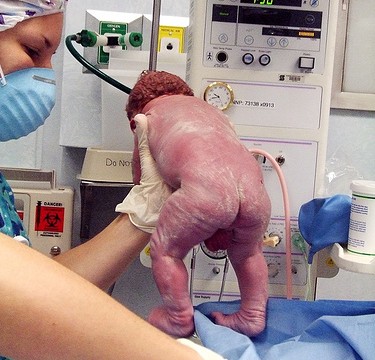What You Need to Know About C-Sections
The future health risks of a C-section are few but they can be serious. A C-section, or cesarean section, is the name of the surgery through which the baby is removed from the mother via a surgical opening in her lower belly area. For many pregnant women this is the only safe form of delivery. Some reasons to have a c-section include trauma to the baby or the baby is in distress, if the baby is in an abnormal position, if there are multiple babies, or if the mother is suffering from a variety of conditions or diseases that would make a vaginal delivery dangerous. For other women, the thought of having a c-section is an attractive alternative to having a vaginal delivery. Some doctors will allow the mother to choose this as an option even if there is no present medical necessity. Having a c-section is, however, not without potential complications and while the surgery is mostly safe, there is some future health risk associated with having a c-section if the woman becomes pregnant again.
Placenta Previa

Placenta previa is the name of the condition whereby the baby’s placenta either totally or partially covers the mother’s cervix. In normal conditions the placenta, which provides nutrients and oxygen to the fetus, attaches to the wall of the uterus. If you have placenta previa your doctor will likely restrict you to bed rest in order to avoid the severe bleeding that can occur before or during a vaginal delivery. If you’ve had previous c-sections then you’re more likely to get this condition compared to if this is your first baby.
Placenta Accreta
Placenta accreta is a condition whereby the placenta has attached too deeply in the uterine wall, but it hasn’t yet penetrated the uterine muscle. This is the most common of abnormal placenta conditions and can affect up to 75 percent of all placenta-related difficulties. There is no known cause for placenta accreta though there is a distinct relationship between the risk of this happening and the number of previous c-sections a mother has had. Placenta accreta is also present in five to ten percent of women with placenta previa.
Having to have a hysterectomy after having placenta acrreta is a very real possibility, so be sure to carefully discuss this with your doctor.
Uterine Rupture
Another c-section future health risk is uterine rupture in subsequent pregnancies if the woman tries to have a normal vaginal delivery. A uterine rupture occurs when during delivery the baby pushes through the wall of the mother’s uterus into the abdominal cavity. This is a life threatening situation that will result in an immediate and emergency c-section. The mother can have massive bleeding and infection, and the baby could suffer brain damage.